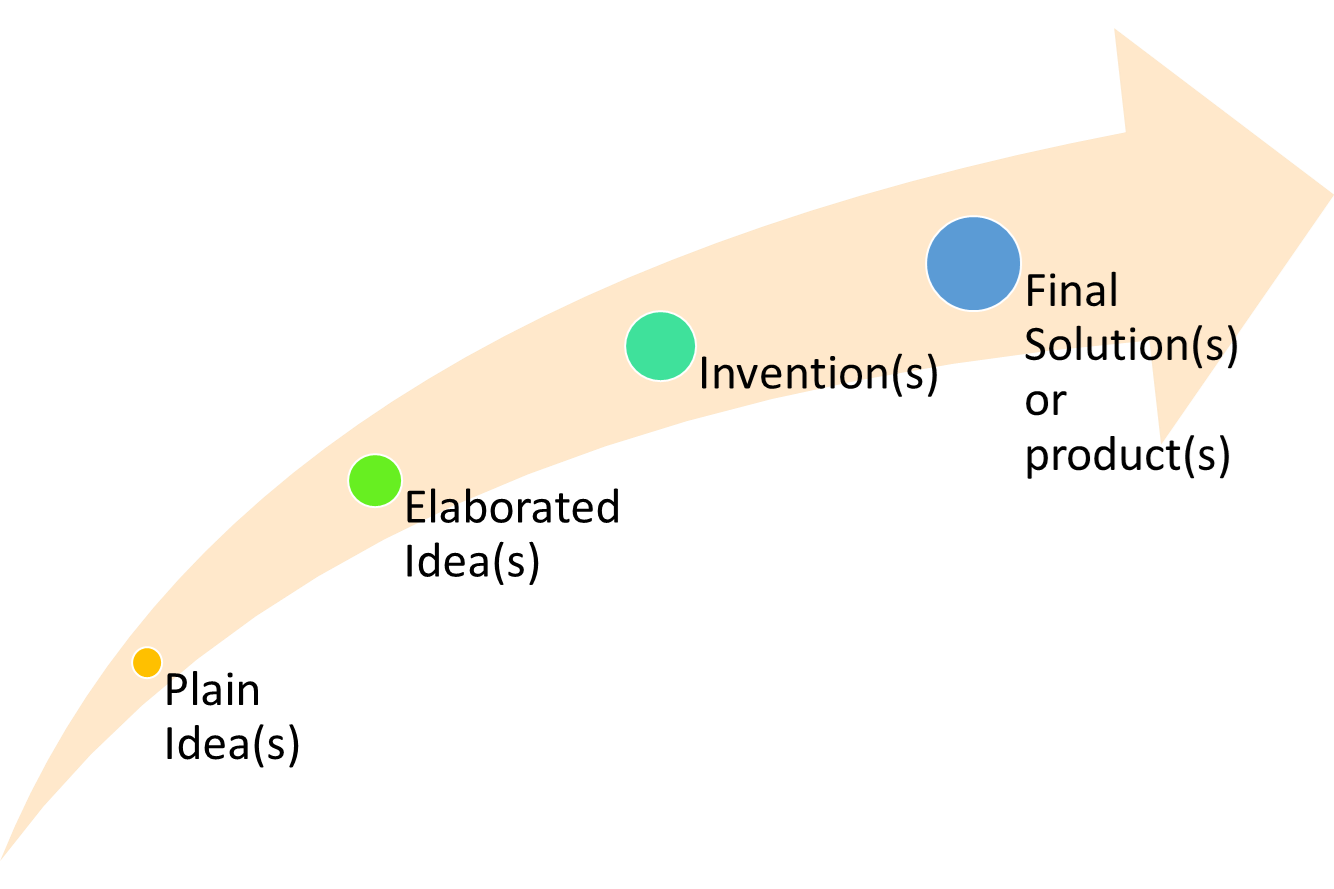While in principle all ideas are just that, ideas with almost zero monetary value, ideas have a powerful motivating power. Quoting Carl Jung: “People don’t have ideas, ideas have people”. That is, an strong idea can posses a person, or a group of people until becoming a reality.
Following up with my previous posts about the ATOM Innovation framework and the Research particle in that atom, here we’ll discuss a bit about the role of the ideation process within this Innovation framework.
It is hard to determine the intrisic value (monetary or motivational) of a “plain idea”, but the fact is that all inventions, all solutions, all great things humans do come from there, from plain ideas.
We can then define ideation as the process of taking simple ideas and enriching them through discussion and elaboration.
In order to properly analyze this, we can identify some core questions whose answer will help us better understand the topic:
- How are ideas created?
- What are good ways to exchange those ideas?
- How do ideas evolve?
Certainly nobody really knows where ideas come from; but we can identify certain elements common to the birth of ideas: on one side we have motivations, things we love (or hate) or things we have some “vocational inner call” to create solutions about. It could be problems at work, our profession, family or social struggles and so on. On the other side, we have foundational knowledge. It doesn’t need to be deep scientific knowledge, though it could be deep, it is enought to have a previous imagination that something is possible for people to look further.
The following figure illustrates different foreseeable phases ideas may go through when coming from a plain-idea level to a final solution or product.
Notice I make emphasis on the (s) plurality of ideas, as they are often not alone, and do not evolve into a single invention or a single product, but a collection of inventions and solutions or products.

For instance if we talk about the invention of the personal computer, we are talking about numerous products, such as the screen, the mouse, the keyboard, the hard drive; and so on.
Being the ideation process an enriching mechanism where ideas more or less “plain” and more or less “elaborated” become even more elaborate by contrasting them against each other. That’s why an idea hidden in a drawer has zero value, and an idea shared with a team, hammered against, critiziced becomes more valuable as it transforms into the consideration of additional variables and elements and sets of knowledge and perspectives from the different participants of the process.
As said before, ideation occurs through a number of different processes where ideas are discussed, challenged and enriched.
A particularly useful tool is the brainstorming process. This is, a tool that allows multiple people exchange ideas about a problem or subject. In this process no idea is a bad idea, all participants express their ideas to the most practical level of detail, and those are then documented, some times categorized, or merged with similar ideas. Once an inventory of ideas is consolidated, the ideation team prioritizes the list from the most valualble (cost vs. return of investment) to the least. Of those ideas, the top valuable ones are selected for execution. In the end the value of an idea resides on its execution.
Notice that idea of “no idea is a bad idea” is not a romantic call. It is a powerful practical attitude of a team to lay out a psychological safety foundation for each participant to express their ideas the best way they can. Often times, ideas that seemed to be irrelevant happen to be the most important part of a solution.
What adds value to ideas? Team discussion, identification, challenging, categorization, merging, prioritization and yes, actual execution.
The ideation process is the foundation of all solutions, of all inventions and of all value created by humans.
A final consideration I want to make is to look again to the intrinsic motivational value of ideas. Rigurously elaborated ideas have the power of motivating individuals and entire teams to do incredible efforts in achieving them.
Comments
Comments are closed.